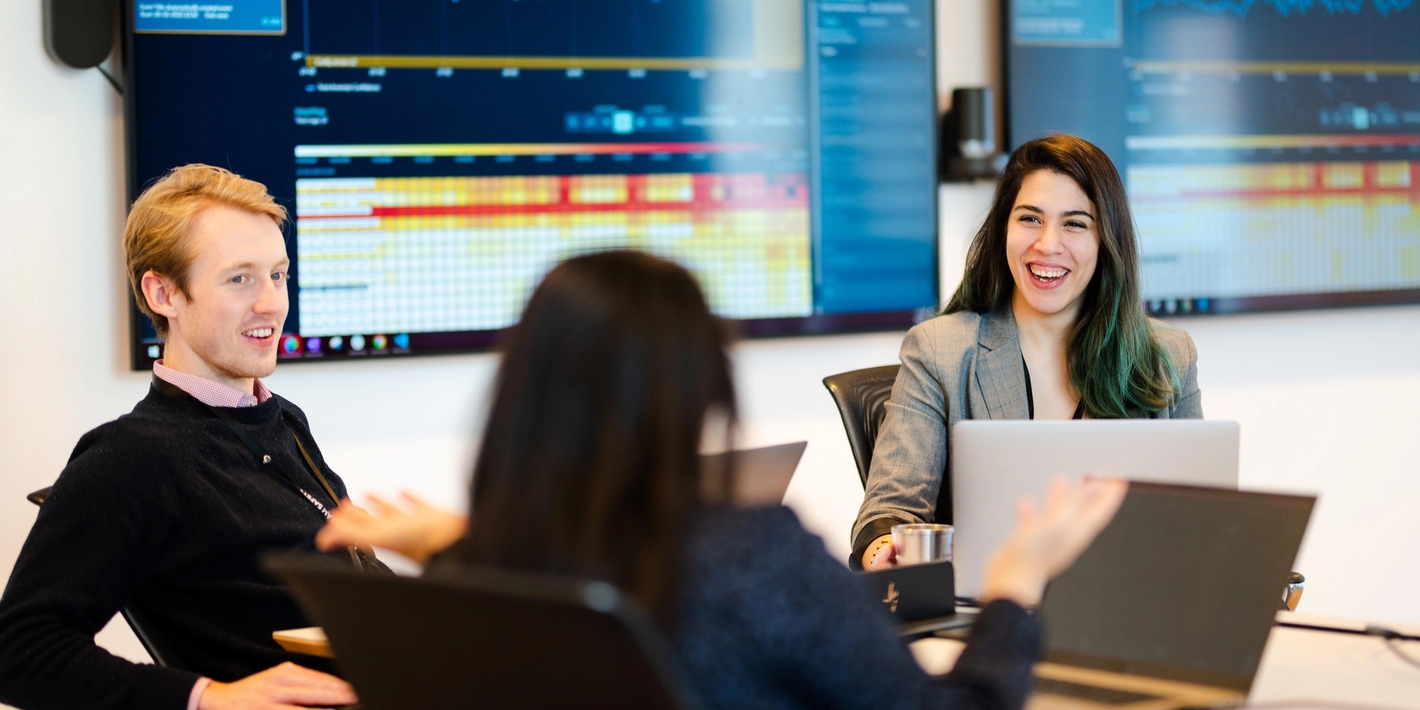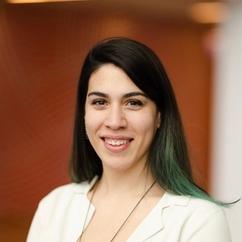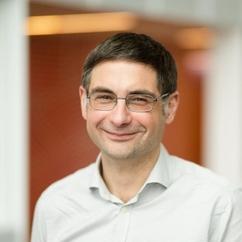2,200 years ago, Archimedes contributed greatly to the development of what we know as “simple machines”; think of the lever and pulley. While machines have evolved in leaps and bounds since then, the dream is still the same; we want to avoid them malfunctioning. Luckily, technologies like machine learning algorithms are helping us move closer towards achieving that dream.
Machine learning against the machine

Mark James Foster and Evmorfia Andritsoupoulou are part of the Omnia.Prevent team.
All photos: Torstein Lund Eik

Omnia.Prevent is a maintenance solution based on machine learning. Basically, we try to predict and prevent failures from happening on our machines, as well as communicate these findings to our engineers to make their lives easier
Evmorfia “Eva” Andritsoupoulou
Data scientist in Equinor
Eva is one of the great minds in the Omnia.Prevent team that are helping us predict the future. While we have engineers who manually monitor these machines today, it’s a task that is both repetitive and at a large scale – making it perfect for machine learning.
Made to be used in our Integrated Operations Center (IOC), Prevent has already made a large impact, but it’s no magical fix that will take all our machine failure worries away.
“Some believe Prevent will replace engineers, but it's a new tool and a way of working that’s based on mathematics and data. Without engineers that help us understand the data before it goes into the algorithm, interpret the output and then actually fix the problem, Prevent would be pointless,” Eva explains.
It’s the close collaboration between our engineers and data scientists that has helped Prevent succeed. And in 2022 alone, Prevent helped us detect 200+ failures on heavy rotating equipment at our plants, saving us millions of NOK and improving safety. While it’s difficult to determine an exact amount – since we can’t measure incidents that don’t happen – there is no doubt that avoiding breakdowns brings value.
More is more
So, how does Prevent work? It’s nothing short of a team effort involving data scientists, developers and engineers. The journey starts with our rotating equipment, think of a turbine or generator, which have an Internet of Things (IoT) device attached to them; a small device that can transmit data over the internet or other networks. These IoT devices can pick up on changes in temperature, pressure and more.
The Prevent team have trained machine learning (ML) algorithms to look for changes in this data.
Let’s say a generator normally runs at a temperature of 75°C. If the temperature unexpectedly climbs towards 125°C, the ML model would pick up on the change and create what’s called an event. This notifies the Prevent team to take a closer look.
Today, Prevent is analyzing data from more than 18,000 sensors spread across 30+ oil and gas installations offshore and onshore – with more to come. But to make sure we pick up on all potential failures, there’s not just one machine learning model running:
Prevent has more than 520 machine learning models in production that produce millions of predictions every day

Hugo Bettencourt Machado
In some cases, one model would be enough but for Prevent it’s a matter of quantity and quality:
“We say we trade perfection in favor of generalization, because it’s more important to have many good models than one perfect one. If we had fewer models, that would mean less machines being monitored - and therefore a much smaller chance of picking up some real failures. More models simply mean more chances of spotting the anomalies,” Hugo explains.

Olav is helping to bridge the gap between the data scientists and Prevent’s engineering users.
Who you gonna call? Engineers!
But pulling off a feat like Prevent takes more than just experts on data – it also takes experts on engineering. That’s where Olav Landstad comes in. While he is part of the Prevent team, he is also an engineer and can understand how our machines and equipment works.
When the machine learning model triggers an alarm, he will be the first to look and can determine if this could be “normal” unexpected behavior, or if he needs to notify the Integrated Operations Center. Then, they can decide if they want to investigate it further. For Olav, working on Prevent means taking part in the best of both worlds:
“There are a lot of similarities between cybernetics and the engineering and data science behind Prevent, as it’s all about the interaction between physical and digital systems, monitoring and fine tuning of signals. Being able to understand the bigger picture and how it all works together is incredibly interesting,” Olav says.
The world has come a long way since the first ideas of the “simple machine”. And Equinor has come a whole lot closer to preventing our advanced machines from failing – thanks to AI.
More on digital in Equinor

Subsurface data and AI in Equinor
Binge watch online from 3,000 meters below ground? You can if you are a subsurface specialist turned data scientist.

Drones and robots in Equinor
Equinor has established a project to work with and accelerate the introduction of robots and drones in the air, on land and under water.

Digital twins in Equinor
Rumour has it the Google car was stopped at the gate. So, we had to build our own “street view” for plants onshore. And don’t forget about offshore, definitely no Google car there.